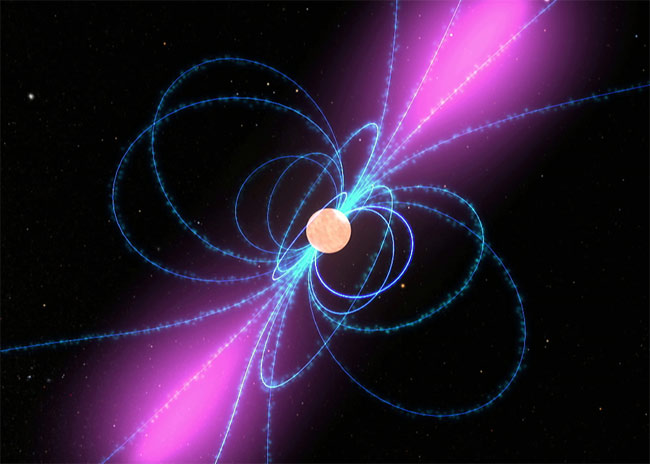Cosmic Currents May Move Faster Than Light

While nothing with mass can move faster than the speed oflight, scientists now think some weird, faster-than-light currents may be thepowerhouse for fast-spinning stars.
The idea may sound heretical to one of most deeply heldtenets in physics, which states that the speedof light is the ultimate speed limit.
But the new proposal squeaks by on a loophole in that rule,which insists only that no mass or information exceeds the speed limit.
In this case, a faster-than-light current would pass throughcertain rapidlyspinning stars. This would cause positively charged atoms in the star tomove in one direction and negatively charged atoms would move in another. Eachindividual particle would move slower than the speed of light, but the wave ofmovement would pass through the star at a rate more rapid than light speed.
"No laws of physics were broken or harmed in thisproduction," said researcher John Singleton of Los Alamos NationalLaboratory in Los Alamos, N. M. "This is not science fiction; it?sreal."
Singleton and his colleague Andrea Schmidt, also of LosAlamos, proposed this process to explain how certain mysterious stars called pulsarsshine. These stars are very dense and rapidly spinning, and emit a beam oflight like a lighthouse. Exactly how pulsars do this has been a mystery.
The researchers think that pulsars' rotating magnetic fieldscreate this current, which pushes the charged particles off in differentdirections, resulting in a focused burst of light.
Get the Space.com Newsletter
Breaking space news, the latest updates on rocket launches, skywatching events and more!
"We think we can explain virtually all observational datausing this method," Singleton said.
Nonetheless, it's a somewhat radical idea, so the scientistsaren't expecting everyone to agree with them immediately.
"This essentially is a completely new approach topulsars, so will be treated with a great deal of hostility until it settlesin," Singleton said.
He and Schmidt presented their research this month at the215th meeting of the American Astronomical Society in Washington, D.C.
- Top 10 Star Mysteries
- The Strangest Things in Space
- Video: Pulsars: Death and Rebirth
Join our Space Forums to keep talking space on the latest missions, night sky and more! And if you have a news tip, correction or comment, let us know at: community@space.com.

Clara Moskowitz is a science and space writer who joined the Space.com team in 2008 and served as Assistant Managing Editor from 2011 to 2013. Clara has a bachelor's degree in astronomy and physics from Wesleyan University, and a graduate certificate in science writing from the University of California, Santa Cruz. She covers everything from astronomy to human spaceflight and once aced a NASTAR suborbital spaceflight training program for space missions. Clara is currently Associate Editor of Scientific American. To see her latest project is, follow Clara on Twitter.









